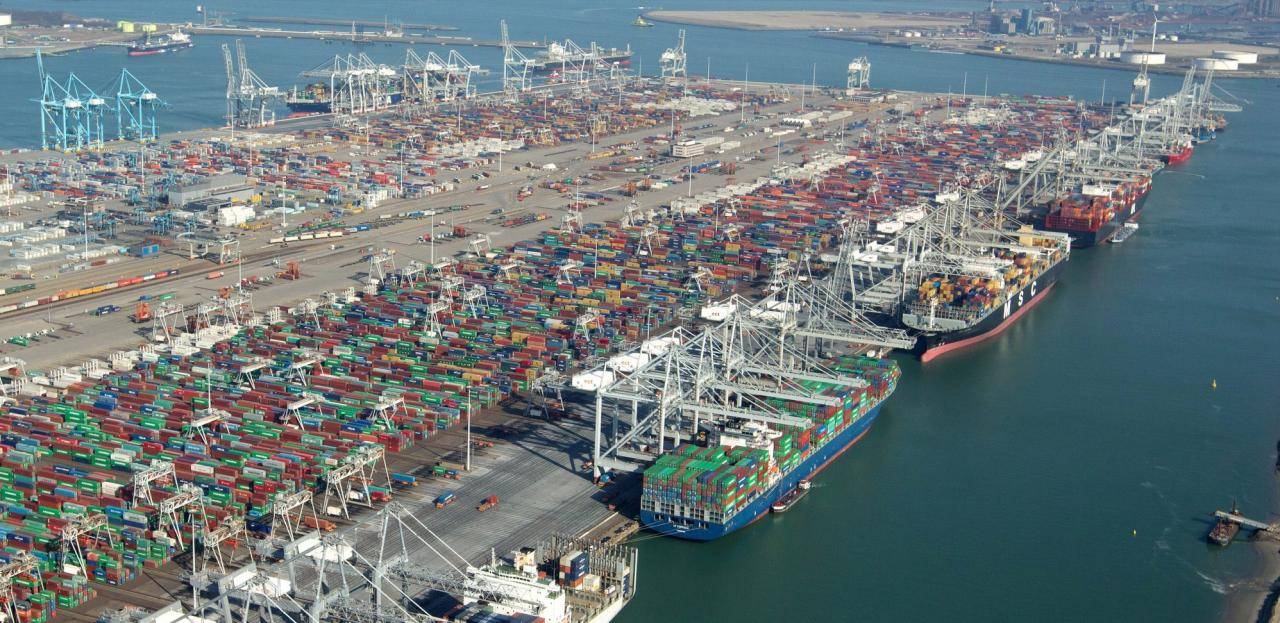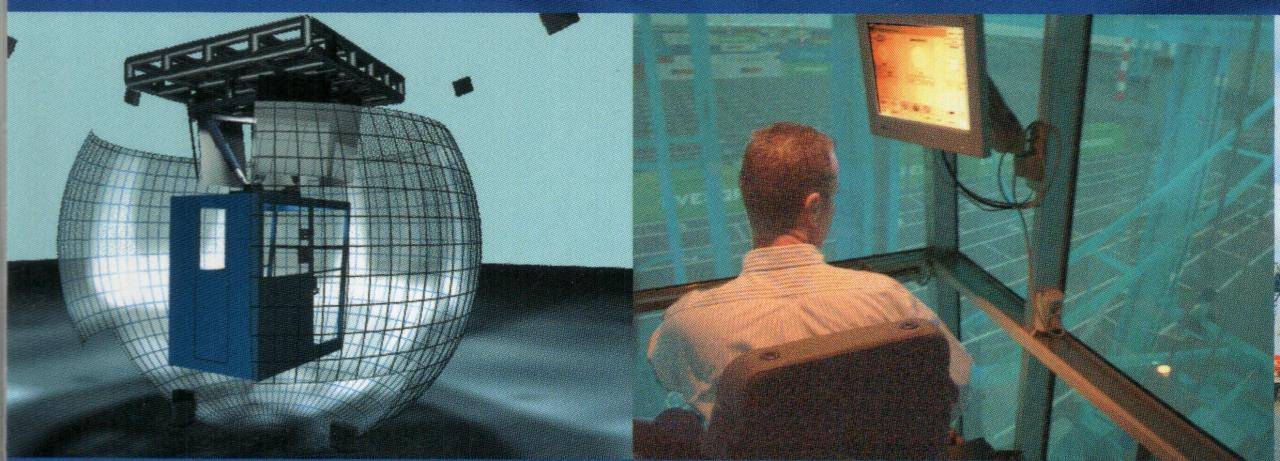How smart technologies increase terminal performance
Introduction
Terminals are continuously focused on increasing the productivity and reducing their costs in order to obtain outstanding performance. Although, most terminal operators will agree that gains in performance are achieved through process improvement, it is also true that not all will meet the desired outcome.
Terminal operators are relying heavily on the TOS for data storage and order management, but for terminal planning and control, they need to rely on people. Operations require human intervention for various decision-making scenarios, considering the working environment is very dynamic and there are different constraints which cannot be determined ahead of time. Nearly all control strategies are reactive rather than pro-active, and even in automated terminals, there is a high percentage of manual intervention besides exception handling. The lack of foreseen human behaviour is a recurring reason for certain mistakes during execution and planning. These mistakes are not easily identified by reviewing the data in the TOS; hence, it will not be considered during the improvement process in most cases.
Opportunities to improve
Terminal performance needs to be continuously analysed as improvements are being applied; moreover, it is important to identify the patterns that are generating manual intervention or other variables in daily repetitive tasks. Add-ons to the TOS software, which accommodate users in their comprehensive tasks, allow terminals to optimise their operations without altering the TOS. TBA has developed, tested and implemented TOS plug-ins at terminals globally to ensure and to contribute to performance and validity in live operations. These intelligent applications retrieve information and push back actions - or updated information - by operating in the background; which has no consequences on the running terminal production system, hence it’s risk-free and will cause no downtime.
In this article, we would like to pinpoint the areas for improvement, the tooling we developed and share our findings of these intelligent applications which are currently running at several terminals.
Use performance indicators
KPI (Key Performance Indicator) measurements are key to establish opportunities for improvement or to measure the effects of certain improvements. Measuring KPIs gives the possibility to compare terminal performance or waste on multiple levels to benchmark values or improvements over time. To make these measurements valuable, a standardised calculation of KPI values is necessary to ensure that you compare apples to apples.
TBA’s KPI tool gives the possibility to automate calculation of KPIs using a standardized method. The KPI tool automatically generates KPI values on micro level as per equipment or per hour, but also long-term measurements. Clear graphs are generated automatically representing the data clearly. The automatically generated graphs are easy to read and directly usable to track performance increase or changes in operation. The KPI tool indicates the strong and weak points of a terminal graphically and combined with the terminal specific knowledge on operation gives great insight in performance increasing possibilities.

Figure 1. Example of a detailed KPI chart automatically generated by the KPI Tool
Improving the RTG yard
RTGs are used by over 70% of the container terminals globally but it is one the most under-utilised pieces of equipment on the yard. The typical productivity level hovers between 6 and 10 (productive) moves per hour which implicates a 40-60% idle time of the RTGs. The main cause of this productivity loss can be related to the static deployment across the terminal, as the equipment is positioned in yard blocks and is exclusively handling moves occurring within these blocks.
The Yard Crane Scheduler continuously monitors the operation, and automatically spreads the workload over the available RTG’s (or CRMG’s for that matter). Moves for trucks already in the yard are always assigned to one of the RTGs, but the main benefit is made by including what is coming next. By considering the work up to an hour ahead we find the balance between quickly handling the waiting trucks now and being at the right place at the right time later.
Recent studies from the deployment of the Yard Crane Scheduler at one of the largest RTG terminals in the world, has realised a rapid increase of more than 10% in RTG productivity in 6 months’ time. A quick calculation in cost saving shows that at least 24,000 US$ per RTG per year, under the assumption that an RTG is running 4,000 hours per year and including labour, fuel and maintenance costs. Multiplied by the typical numbers of RTGs on a 1M TEU terminal (let’s say 20+ RTGs), a better RTG deployment can lead up to a saving of 500K US$ annually (or more in case of larger terminals, or terminals with a more Labour intensive RTG deployment).
Further enhancements of TBA’s Yard Crane Scheduler provide further improvement potential (up to 25% as shown in lab experiments). These enhancements extend the functionality to optimal placements of RTG’s across the entire yard. This will soon be rolled out in production.

Figure 2. Overview key features Yard Crane Scheduler
Better plan, smoother operations
It is often seen that planning is not well assessed, and there is no feedback for the planners to measure and evaluate their plans. It is hard for planners to learn about their past errors in order to improve the quality of planning. To improve the yard planning, we gathered the most commonly made mistakes and implemented these in the Plan Verification Tool, which instantaneously checks plans for common mistakes. The tool runs quickly after the plan has been finalised, and then allows for fixing errors and utilizing the improvement potential. Efficiency improvement is recognized for instance by missed twinning opportunities, minimise rehandling or optimised loading sequences to avoiding peaks inside the yard. With the continuous use of the tool, it is possible to accomplish a better plan which concludes with a better performance.

Figure 3. Overview key features Plan Verification Tool

Figure 4. Using Plan Verification Tool: a better plan for a better performance
Safety first
Any terminal suffers from chimney stacks, it is unavoidable and a priority for safety regulations in case of windy conditions. Reducing chimney stacks can be achieved by having stacking strategies. The Chimney App influence in the grounding decision in real-time with the aim to avoid chimney stacks to be built and allows remaining chimneys organised to remove the chimneys, so not only detects chimneys but also reduce the number with a continuous use of the tool. Chimney stacks have been reduced by 98% by using the Chimney App and thus increased safety on the yard. Overall,the approach we see for the upcoming years is to use the full potential of terminals resources with the support of state-of-the-art technologies and tools that will enhance the operational performance. By applying smart technologies in terminal operations, operators and users can focus on what they do best: to interpret the provided information and to tune the terminal operations in boosting terminal performance.

Figure 5. Overview key features Chimney App

Figure 6. The Chimney App reduces chimney stacks and therefore increases safety on the yard
This article has been published in Port Technology International Magazine Edition 89.
Share this
You May Also Like
These Related Stories

Lean and mean terminal design benefits from advanced modelling

Human Machine Interfaces - the key to productivity?
